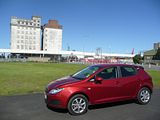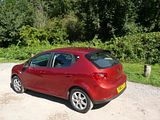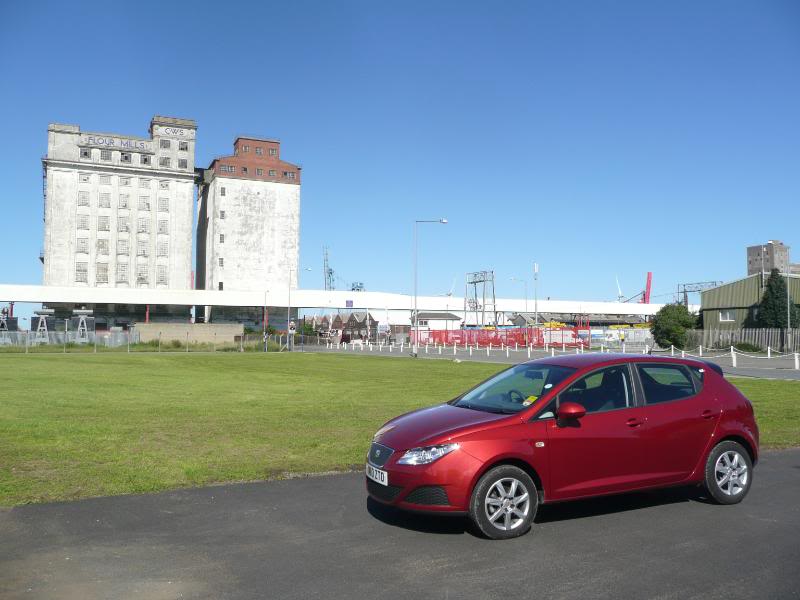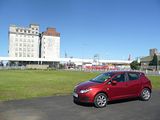 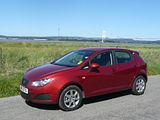 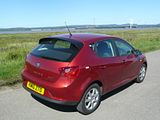 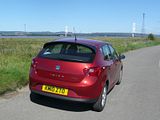 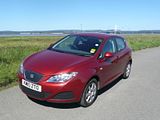 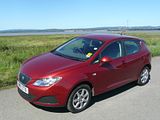 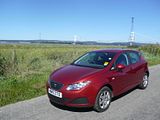   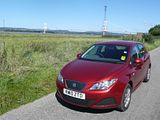   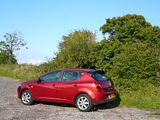 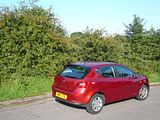    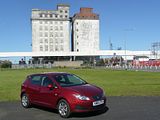 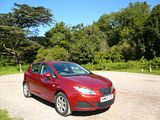  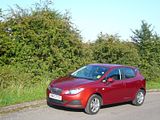 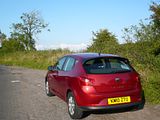 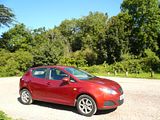 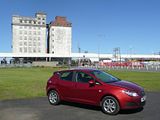 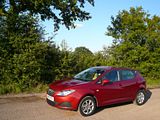 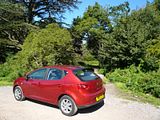 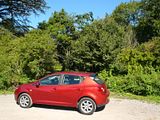  |
It seems that the only Spanish manufacturer, SEAT, is almost constantly in the news, as parent company VAG agonises in how to translate the “Auto Emocion” of brand marketing into healthy sales. Ten years ago, things looked good for SEAT, when they added a volume selling medium hatchback to the existing range of family-sized cars, the Leon, and were showered with good reviews even before the fiery Cupra and Cupra R models appeared on the scene. Success in rallying also helped in building some brand image. Latterly, though, things have looked more challenging, with a product range largely based on multiple derivatives of the same basic car, some with gawkier styling than others (step forward the late-lamented Toledo!), and less than stellar sales. The 2008 launch of the fourth generation Ibiza, with its sharp styling suggested that after a mid decade aberration or two, perhaps SEAT had indeed rediscovered some of their mediterranean flair after all. This supermini sized car was favourably reviewed on launch, and has sold steadily ever since, especially once the initially rather limited range of engine options was boosted and the three door and estate bodyshells arrived. Ibiza now comprises a complete family of cars ranging from economy hatchback all the way to the moderately hot hatch Cupra models. When Mr Hertz offered me an example from the current range, I was happy to accept the proposition and see what motoring SEAT Ibiza style is like in 2010.
 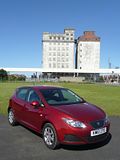 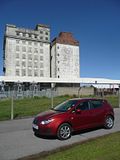  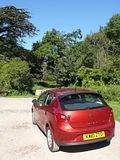 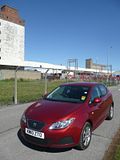  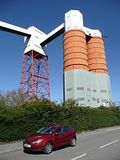 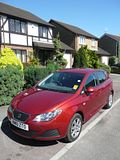 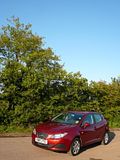
The test car turned out to be from Hertz’ “Green” Collection, and to be the Ecomotive variant of the Ibiza. The particular model I sampled has now been updated to include some of the changes, including the 1.2 litre engine, that were introduced on last year’s new Polo but my task is to assess the car that I drove and not to speculate on something I have not yet sampled. Even this outgoing model had some amazing credentials, as it is one of few cars that gets under the magic 100 g/Km of CO2, with a rating at just 99. This is achieved by fitting the Ecomotive with the VAG group three cylinder 1.4 TDi engine, much higher gearing than you get in the standard cars, skinnier tyres, and a blanked off radiator grille, along with careful attention to weight reduction, achieved not least by minimising the equipment levels. Surprisingly, it does not go as far as a Stop/Start system. As well as the very low CO2 rating, some almost unbelievable claims are made for fuel economy, with an official combined cycle figure of 76.9mpg being claimed. 79 bhp and a five speed gearbox in a supermini does not sound like super-slow purgatory, so I was interested to see not only what the Ibiza is like to drive and also, noting that these sort of CO2 reducing techniques are starting to become quite commonplace, whether any sacrifices in performance are worth it for the economy gains.
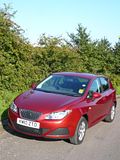 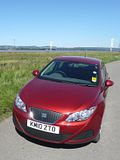 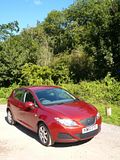  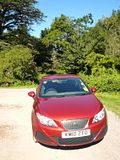 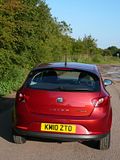    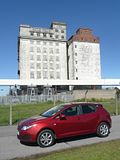
There is no mistaking the fact that you have a diesel engine in this car, as the characteristic clattering sound is all too evident when you first fire it up. Unlike a lot of the latest derv burners, which are almost aurally indistinguishable from petrol cars once underway, you would not be fooled with this one, as the diesel noise continues almost regardless of the speed you are doing. The engine is quite smooth, and it was actually a bit of a surprise to learn that it is in fact a three cylinder and not a four. The gearing has been chosen to maximise the fuel economy and minimise the carbon emissions, and as such the car requires you to drive in quite a different manner from other cars, or even from how you would expect. There is next to no power and no torque at all until you reach at least 2000rpm, so acceleration from a standstill is not of the ball of fire type, and because of the incredibly high gearing, you will almost always find that you need to be in at least one gear lower than you would expect. Driving at 30 mph in urban areas, third gear is almost unusable, so you find yourself in second, and paying the price from the less than pleasant noise of an engine which would appear to be working harder than you would think would be conducive to optimum economy. Similarly, fourth gear is a struggle for 50 mph. Fifth gear is just about usable on the motorway, though 70 mph is a little too slow even for this, as at this speed the engine is turning over at less than 2000 rpm. Even at this speed, and with the engine doing not a lot, the noise levels are far from low, and you are always more than aware of that diesel engine. If anything, the engine was noisier when it was fully warmed up than when it had only been used to drive a few miles across town.
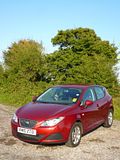 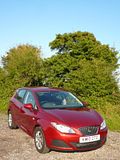 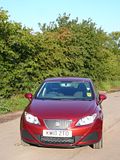 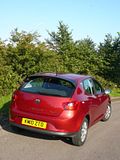 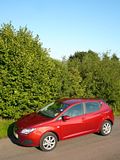 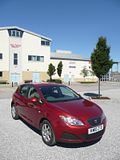  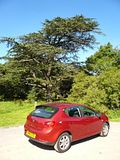  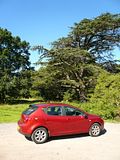
The gearchange – something you will be using an awful lot – is not too bad, though it is a little notchy. If you do make full use of the gears, and can find the optimum ratio for the relatively narrow torque band, you can make reasonable progress, but it is harder work than you might expect even for a supermini. I would love to be able to tell you that this all means that you get some truly spectacular economy, as the official figures suggest should be the case. Sadly, this did not seem to be the reality. Certainly the trip computer recorded just above 60 mpg for my commute into London, which is rather better than the 26/27mpg that I get from the 10 cylinder Audi, but pure urban motoring had it reading in the low 40s, and when it came to refuelling the Ibiza, it took rather more of the black stuff than I was expecting, making me suspect that the trip computer flattered somewhat to deceive. The challenging dynamics do not stop with the performance. The steering is so incredibly light and vague that I did wonder if it was connected by bluetooth, or perhaps just a dish of cooked spaghetti, to the front wheels. Whilst this might be quite useful when you are parking, once on the move, it was almost scary that it was so imprecise, as you had no real sensation of where the front wheels were pointing at all. It does not help that the handling is probably not up to much, either. With narrow tyres specified to help the economy, grip is not particularly copious, and anyway given the vague steering when you did not really have any sensation of where the front wheels were going to point, along with the challenging performance, it did not encourage you to test out the limits. Even the brakes were not brilliant, needing a very hard push on the pedal to make a prompt stop. The handbrake is a conventional pull-up lever between the seats. At least the Ibiza rides quite well, and despite the constant engine noise and a certain amount of wind noise, it is relatively refined as a motorway cruiser. All round visibility is not bad, with small front quarter lights ahead of the doors to help at the front, and large mirrors to help you to judge rearwards as assistance.
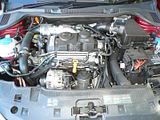 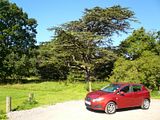 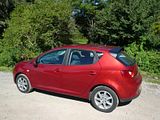 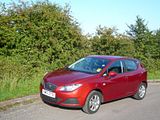 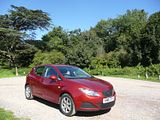 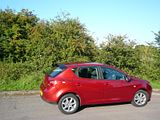 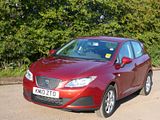  The story inside the cabin is not quite so bad. Fit and finish has clearly been the beneficiary of some VAG design principles, though I did not particularly take to the rather odd textured finishing to the dash. Most of the inside is a rather unremittingly dreary dark grey, but the central B pillars are finished in white and when the passenger seat is set well back, if no-one is sitting there, you get a slightly odd impression when you catch this in your peripheral vision. The dash itself is very simple, with a hooded binnacle containing two very deeply recessed dials, namely a speedometer and rev counter. In the daylight, they proved remarkably hard to read, with small markings, and as they were set back so far, were simply too dim. At night, they were much clearer, though. The speedometer is marked only in multiples of 20 mph, and with very small calibrations, so it was surprisingly hard to judge what was 30 mph. There is a digital panel between the two dials for the odometer, with a bar graph for fuel level, and a simple trip computer cycle of average speed and fuel consumption figures which is cycled by pressing a double-bobbled button on the end of the right hand column stalk. The centre of the dash is quite simple, too, with nothing more than rotary dials for the air conditioning and a CD/stereo system mounted high above it. This proved quite easy to use, though it did not have explicit buttons for radio pre-sets which is unusual. Other buttons are few and far between, with some, such as the hazard warning lights, mounted down on the centre console, and most functions controlled by the two column stalks. It is neat but cannot hide the fact that in this trim, it is all really rather basic. The story inside the cabin is not quite so bad. Fit and finish has clearly been the beneficiary of some VAG design principles, though I did not particularly take to the rather odd textured finishing to the dash. Most of the inside is a rather unremittingly dreary dark grey, but the central B pillars are finished in white and when the passenger seat is set well back, if no-one is sitting there, you get a slightly odd impression when you catch this in your peripheral vision. The dash itself is very simple, with a hooded binnacle containing two very deeply recessed dials, namely a speedometer and rev counter. In the daylight, they proved remarkably hard to read, with small markings, and as they were set back so far, were simply too dim. At night, they were much clearer, though. The speedometer is marked only in multiples of 20 mph, and with very small calibrations, so it was surprisingly hard to judge what was 30 mph. There is a digital panel between the two dials for the odometer, with a bar graph for fuel level, and a simple trip computer cycle of average speed and fuel consumption figures which is cycled by pressing a double-bobbled button on the end of the right hand column stalk. The centre of the dash is quite simple, too, with nothing more than rotary dials for the air conditioning and a CD/stereo system mounted high above it. This proved quite easy to use, though it did not have explicit buttons for radio pre-sets which is unusual. Other buttons are few and far between, with some, such as the hazard warning lights, mounted down on the centre console, and most functions controlled by the two column stalks. It is neat but cannot hide the fact that in this trim, it is all really rather basic.
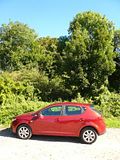 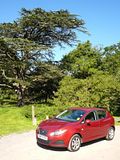 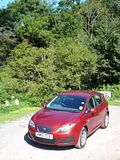  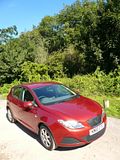    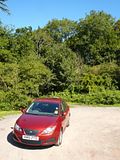 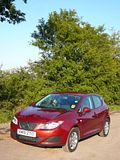
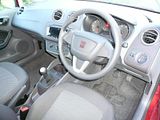 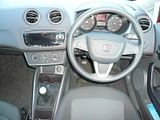 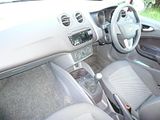 Weight saving is all part of the Ecomotive philosophy, so you do not get much in the way of equipment. There is a column mounted pod for remote operation of the audio system, basic air conditioning, electric front windows and you do get alloy wheels, but that is about it. Weight saving is all part of the Ecomotive philosophy, so you do not get much in the way of equipment. There is a column mounted pod for remote operation of the audio system, basic air conditioning, electric front windows and you do get alloy wheels, but that is about it.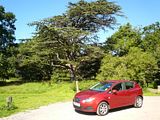 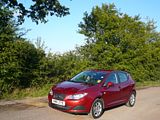   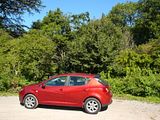 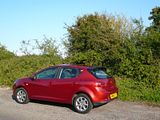 Although classed as a supermini, the Ibiza has always been one of the largest cars in its class, sitting almost in between the Punto/Clio/Fiesta and Focus/Golf/Astra sized cars, and despite the constant inflation in size of all cars, this is still the case with this model compared to its rivals. The rear cabin did seem generous, with ample leg and head room, and just about enough space for three adults to occupy the rear seat. The boot is that bit larger than its competitors, too, and is a very regular shape, with a couple of fenced off cubby areas at each side. On this model, the rear seat backrest was not split, but you could extend the luggage area by cantilevering the rear cushion up and forwards and dropping the backrest down to create a flat floor. You did need to have the front seats quite well forward for this, though. Inside the cabin, there were a number of small cubby areas on the centre console, to the right of the driver’s legs as well as the usual door pockets and averagely sized glove box. Although classed as a supermini, the Ibiza has always been one of the largest cars in its class, sitting almost in between the Punto/Clio/Fiesta and Focus/Golf/Astra sized cars, and despite the constant inflation in size of all cars, this is still the case with this model compared to its rivals. The rear cabin did seem generous, with ample leg and head room, and just about enough space for three adults to occupy the rear seat. The boot is that bit larger than its competitors, too, and is a very regular shape, with a couple of fenced off cubby areas at each side. On this model, the rear seat backrest was not split, but you could extend the luggage area by cantilevering the rear cushion up and forwards and dropping the backrest down to create a flat floor. You did need to have the front seats quite well forward for this, though. Inside the cabin, there were a number of small cubby areas on the centre console, to the right of the driver’s legs as well as the usual door pockets and averagely sized glove box. 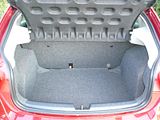 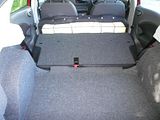  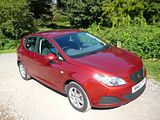 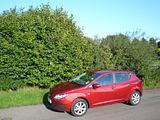 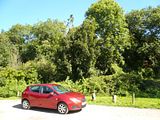 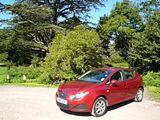 I could not help thinking that there is a decent enough car trying to present itself here, but in this form, I could not contemplate recommending it. There’s nothing wrong with the basics of the Ibiza, and I know that we are all going to have to get used to some of the environmental tweaks and these will change our driving experience more than somewhat, but the gruff engine and that oh-so-high gearing were just too difficult to accept. Indeed, they were so frustrating that I took the car back to Hertz some days early and changed it for a far more refined diesel. It was clear that I am far from the first customer to find this Ibiza something of an acquired taste. With the onset of ever more eco-legislation, it is quite an alarming thought to realise that this might be a taste that we all have to acquire, and sooner rather than later. Oh dear! I could not help thinking that there is a decent enough car trying to present itself here, but in this form, I could not contemplate recommending it. There’s nothing wrong with the basics of the Ibiza, and I know that we are all going to have to get used to some of the environmental tweaks and these will change our driving experience more than somewhat, but the gruff engine and that oh-so-high gearing were just too difficult to accept. Indeed, they were so frustrating that I took the car back to Hertz some days early and changed it for a far more refined diesel. It was clear that I am far from the first customer to find this Ibiza something of an acquired taste. With the onset of ever more eco-legislation, it is quite an alarming thought to realise that this might be a taste that we all have to acquire, and sooner rather than later. Oh dear!  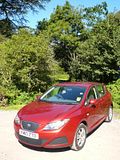 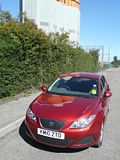 |
